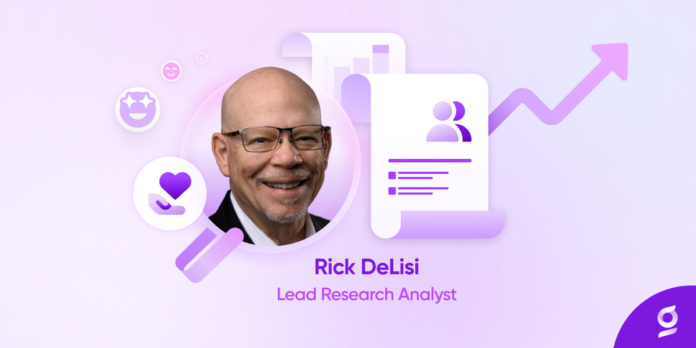In a recent ebook on the future of customer surveys, Glia partner Tethr (the leaders in conversation analytics to improve contact center performance) conducted an interview with Rick DeLisi–lead research analyst at Glia, and co-author of “The Effortless Experience” and “Digital Customer Service.” Here are the key excerpts:
Knowing that Rick wrote the book(s) on delivering an effortless customer experience, we asked him to share his thoughts on the state of the customer survey and how he sees the methods of collecting feedback changing in the future.
Q: What do you think is the biggest mistake an organization could make when using customer surveys?
A: Companies that rely primarily on surveys as the basis for their CX metrics (NPS, CSAT, Customer Effort) often miss insights that could have led to meaningful improvements. No matter how good your surveys are or how high your response rate is, the quest to become truly customer-centric requires companies to do at least SOME qualitative research as well. Focus groups, one-on-one interviews, any kind of two-way interactions (whether in-person or virtually) are the only way to dig deeper into how customers truly think and feel. Sometimes one comment made by one customer in an interview can uncover an idea you never would have thought of even after analyzing data from 10,000 survey responses. Here’s a tip: Use your quant (surveys) to inform your qual (interviews), which further informs your future quant.
Q: How do you anticipate the ways customer service departments use surveys will change in the next five years?
A: The smartest companies will be those that use survey data to “engineer” the digital interactions they are having with customers. By learning more about customer digital behaviors and expectations, it is now possible to better match the right interaction for each customer, each time they contact your organization.
Q: How does the customer survey fit alongside customer analytics technologies?
A: Companies can now use analytics to better predict exactly what kind of interaction to offer each customer, based on their specific NEED–the reason they are contacting you at this moment. If overall live handle time (for both phone and digital interactions) begins to measurably decrease, and customer experience metrics rise–you’ve found the sweet spot between cost and quality. Survey data can be useful here, helping you predict which interaction type is best suited for each customer’s need. This is now a knowable thing.
Q: What would have to happen for a business to stop using post-interaction surveys?
A: Companies now have the opportunity to learn about a customer’s experience without having to ask. A customer’s sentiment can be measured within the interaction itself, and as this becomes the norm, surveys become superfluous. But nothing will ever replace what can only be gathered through human interactions like interviews and focus groups, where follow-up questioning can uncover the deepest and most valuable insights.





